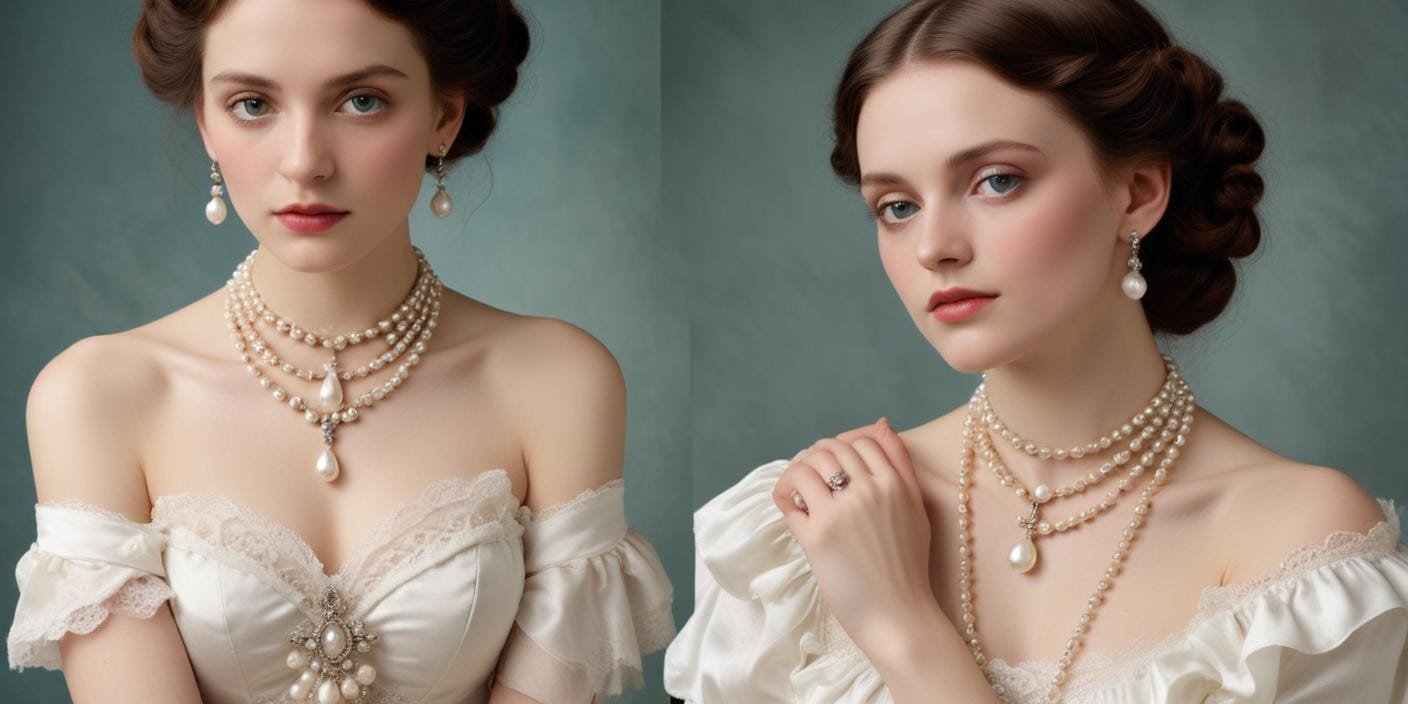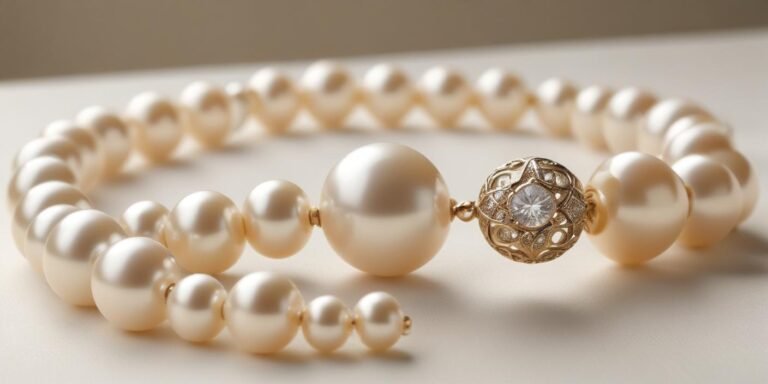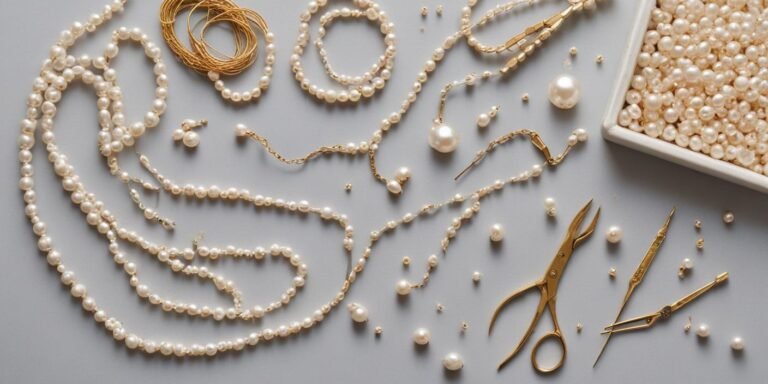

By
Imraana Varcie
FOUNDER & CEO, INAAYAPEARLS.
The Timeless Allure of Pearls: A Journey Through History and Culture
Once upon a time, in the lavish court of Queen Elizabeth I, a dazzling pearl necklace caught the light, captivating all who beheld it. This exquisite piece of jewelry did not merely serve as an adornment; it represented power, wealth, and the intricacies of trade that defined an era. The symbolism of pearls has transcended ages, influencing cultures and societies worldwide. As they shimmer in the depths of the ocean, pearls evoke a sense of timelessness that connects humanity to beauty in its most natural form.
The allure of pearls is not confined to their aesthetic appeal. Their journey through history reveals a rich tapestry woven from the interactions of diverse civilizations. From ancient Chinese dynasties, where pearls were believed to hold protective properties, to the opulence of Renaissance Europe, they have continuously played significant roles in expressing status and identity. The universal appeal of pearls spans across continents and cultures, making them a noteworthy subject of exploration.
This blog post aims to delve into the fascinating world of pearls, tracing their significance from ancient civilizations to the present day. Key regions such as the Mediterranean, Asia, and the Americas will be examined, highlighting their distinct interpretations and uses of pearls. Alongside, we will explore pivotal time periods, including ancient Egypt and the Victorian era, which contributed to the varied narratives surrounding these precious gems. Through this journey, we will uncover how pearls have inspired artists, navigated trade routes, and woven intricately into the fabric of human relationships, embodying the enduring essence of beauty and elegance.
Ancient Origins
Pearls have captivated humanity for millennia, tracing their origins back to ancient civilizations. The earliest known associations with pearls can be found in Mesopotamia, around 3000 BCE. This region, characterized by its proximity to the Persian Gulf, became a central hub for pearl diving. The natural wealth of the Gulf allowed for the establishment of trade routes, through which pearls were transported and exchanged, underscoring their value in commerce and culture. In Mesopotamian society, pearls were not only considered beautiful adornments but also held immense significance, often reserved for the elite and royalty.
As trade flourished, so did the demand for these lustrous gems. Historical accounts indicate that pearls were used as currency. This transactional value was an acknowledgment of their rarity and beauty, contributing to the establishment of pearls as symbols of luxury. The allure of pearls transcended borders, impacting neighboring civilizations, including ancient Rome, where they were revered for their opulence. Figures such as Cleopatra, known for her extravagant lifestyle, famously donned pearls, further enhancing their association with wealth and status.
In parallel, ancient India also recognized the significance of pearls, evidenced by its thriving pearl fisheries. These fisheries, particularly in the Persian Gulf and the Indian Ocean, supplied pearls not only for trade but also for cultural and religious ceremonies. In Indian mythology, pearls were often linked to divine origins and were emblems of purity and prosperity. They played a vital role in adornments for various deities and were integral in bridal trousseaus, symbolizing love and harmony. Thus, the ancient fascination with pearls reverberated through these civilizations, shaping their cultures and economies while establishing pearls as timeless treasures throughout history.
The Silk Road and Beyond
The Silk Road, an intricate network of trade routes connecting the East and West, played a pivotal role in the exchange of not only goods but also cultural practices. Among the most coveted commodities exchanged along this route were pearls, which quickly became symbols of wealth, status, and beauty. As merchants traversed these paths, they transported pearls from the opulent shores of the Persian Gulf and the South China Sea to bustling markets in Europe and the Middle East, establishing pearls as precious elements within various cultures.
The trade in pearls facilitated a significant cultural exchange, enabling diverse styles of pearl jewelry to emerge across different regions. In the West, European jewelers began to incorporate pearls into intricate designs, influenced by the delicate craftsmanship practiced in the East. Meanwhile, in Asia, particularly in China, the art of pearl cultivation was refined over centuries. The introduction of specific techniques allowed for the mass production of cultured pearls, which were eventually embraced by China’s imperial court. These exquisite gems transformed traditional jewelry, adding layers of elegance and luxury that would captivate emperors and artisans alike.
In the Arab world, the cultural significance of pearls extended beyond ornamental use; they became integral to the region’s artistic expression. Pearl diving, a practice rooted in ancient traditions, not only sustained livelihoods but also fostered a profound appreciation for these gems. The meticulous artistry of Islamic jewelry reflected this reverence, showcasing the allure of pearls in detailed designs where the gems became emblematic of both beauty and sophistication. This exchange of ideas and aesthetics, fueled by the trade routes, underscores the timeless allure of pearls and their enduring impact on global culture.
The Age of Exploration and Colonialism
The Age of Exploration marked a significant turning point in the history of pearls, as European nations sought new territories and resources during the 15th to 17th centuries. With the advent of European exploration, the demand for pearls surged, particularly in Spain and Portugal, where pearls were considered symbols of wealth and power. This increasing appetite for pearls led to extensive exploitation of natural resources, particularly in the coastal regions of the Americas and the East Indies. The quest for pearls became intertwined with colonial ambitions, resulting in both the overharvesting of pearl oysters and the exploitation of indigenous populations engaged in pearl diving.
During the Baroque period, which spanned the late 16th to the early 18th century, extravagant pearl jewelry gained prominence among European aristocracy. The opulence of Baroque design placed a strong emphasis on decorative elements, blending natural materials with artistic craftsmanship. Pearls were often used in elaborate necklaces, earrings, and brooches, signifying not only wealth but also status within the intricately hierarchical European courts. The lavish use of pearls in jewelry was reflective of the broader societal values of the time, where affluence and prestige were showcased through ostentatious displays of wealth.
Modern Era and Beyond
The evolution of the pearl industry in the modern era has been profoundly shaped by the advent of cultured pearls, a significant transformation that revolutionized the market dynamics and accessibility of these lustrous gems. The pivotal role of Kokichi Mikimoto, a Japanese entrepreneur, cannot be overstated. In the early 20th century, Mikimoto perfected the method of culturing pearls, which allowed for the mass production of high-quality pearls. This innovation not only made pearls more available to the general public but also established their presence in luxurious jewelry collections worldwide. Cultured pearls quickly became synonymous with elegance and sophistication, garnering widespread popularity.
During the Art Deco movement of the 1920s and 1930s, pearl jewelry evolved dramatically, reflecting the contemporary aesthetics of the time. Art Deco design prioritized bold geometric shapes, innovation, and vibrant colored gemstones. Pearls were often integrated into these avant-garde designs, creating a striking contrast of opulence against the angular motifs. This era saw the pairing of pearls with diamonds and platinum, resulting in exquisite pieces that exemplified the luxury that pearl jewelry could embody. The modernist aesthetic continued to influence pearl designs, as jewelers sought to explore new forms and presentations, emphasizing the natural beauty of pearls in innovative ways.
Today, pearl jewelry trends continue to evolve, characterized by a fusion of traditional elegance and contemporary design. Innovative jewelry makers are experiment with unconventional settings, mixing pearls with alternative materials, and embracing asymmetrical designs. Furthermore, there is an increased emphasis on sustainability within the pearl industry, leading to a rise in eco-friendly sourcing practices. This conscientious shift allows consumers to appreciate the allure of pearls while supporting ethical standards in jewelry production. As such, pearls remain a timeless choice for modern jewelry, bridging the classic with the contemporary and cementing their position in the current fashion landscape.
Conclusion
The allure of pearls has transcended generations, captivating societies with their distinct beauty and rich historical significance. From their ancient origins, pearls have been celebrated not only for their exquisite luster but also for their associations with luxury and elegance. Evidence suggests that their use dates back thousands of years, serving as symbols of wealth and status in various cultural contexts. Their prominent presence in trade history, especially during the early exploration periods, showcases the prominent role they played in economic exchanges and the rise of trade routes that intertwined diverse civilizations.
Furthermore, pearls have held profound cultural significance in many societies. They have been revered in literature, art, and mythology, often representing purity, wisdom, and the divine. In different cultures, pearls have been gifts for brides, tokens of wealth, and symbols of spirituality, illustrating the versatility of this gem. Each narrative surrounding pearls adds layers to their mystique and demonstrates how they have intricately woven themselves into the fabric of human expression and heritage.
In modern interpretations, pearls have reemerged as a symbol of contemporary fashion, embraced by designers who see them as versatile elements that can adapt to current trends while maintaining their classic appeal. The enduring nature of pearls serves as a reminder of their timeless beauty and their ability to inspire creativity across various fields. In essence, pearls embody more than just aesthetic qualities; they symbolize an interconnectedness of cultures, a shared history, and a celebration of beauty that resonates through time. As we navigate a world rich with diversity, the presence of pearls continues to remind us of our shared human story, bridging gaps and inspiring connections among different cultures throughout history.


